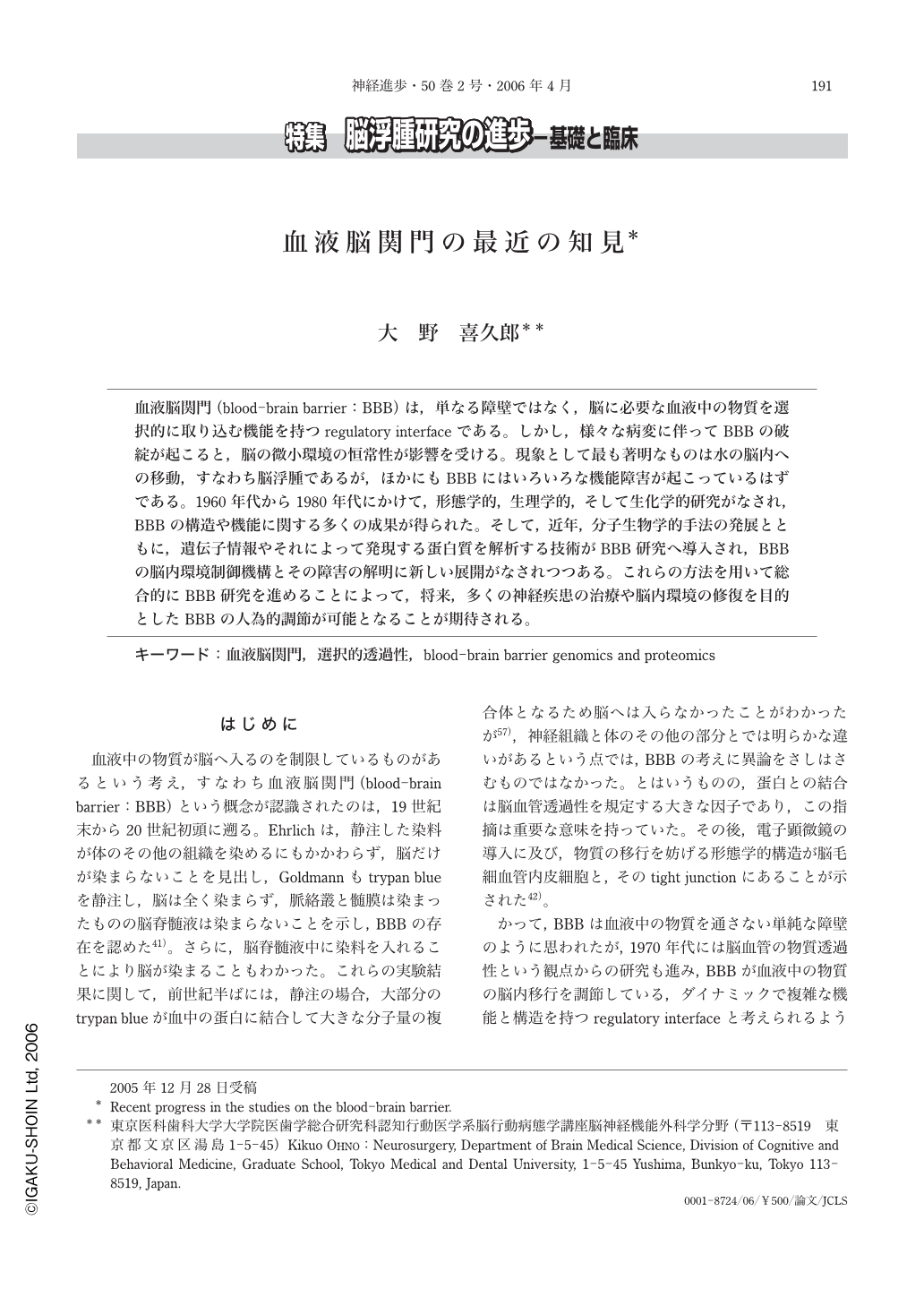Japanese
English
- 有料閲覧
- Abstract 文献概要
- 1ページ目 Look Inside
- 参考文献 Reference
血液脳関門(blood-brain barrier:BBB)は,単なる障壁ではなく,脳に必要な血液中の物質を選択的に取り込む機能を持つregulatory interfaceである。しかし,様々な病変に伴ってBBBの破綻が起こると,脳の微小環境の恒常性が影響を受ける。現象として最も著明なものは水の脳内への移動,すなわち脳浮腫であるが,ほかにもBBBにはいろいろな機能障害が起こっているはずである。1960年代から1980年代にかけて,形態学的,生理学的,そして生化学的研究がなされ,BBBの構造や機能に関する多くの成果が得られた。そして,近年,分子生物学的手法の発展とともに,遺伝子情報やそれによって発現する蛋白質を解析する技術がBBB研究へ導入され,BBBの脳内環境制御機構とその障害の解明に新しい展開がなされつつある。これらの方法を用いて総合的にBBB研究を進めることによって,将来,多くの神経疾患の治療や脳内環境の修復を目的としたBBBの人為的調節が可能となることが期待される。
The blood-brain barrier(BBB)is not only a barrier but a regulatory interface between circulating blood and nervous system with important functions such as selective uptakes of necessary nutrients. BBB breakdown due to various causes results in changes of micro-or macro-environment of the brain such as brain edema. Morphological, physiological and biochemical studies on the BBB produced many important results between the 1960s to 1980s. In the meanwhile, an in vitro BBB model using isolated brain capillary endothelial cells became available. It is necessary to correlate observations obtained with the in vitro BBB research with in vivo studies. The classical physiological methodologies may now be correlated with recent biochemical and molecular biological approaches using isolated animal or human brain capillary endothelium. The integration of these research techniques may make it possible to manipulate BBB for the treatment of various neurological diseases and for the repair of damaged brain environment in future.

Copyright © 2006, Igaku-Shoin Ltd. All rights reserved.


